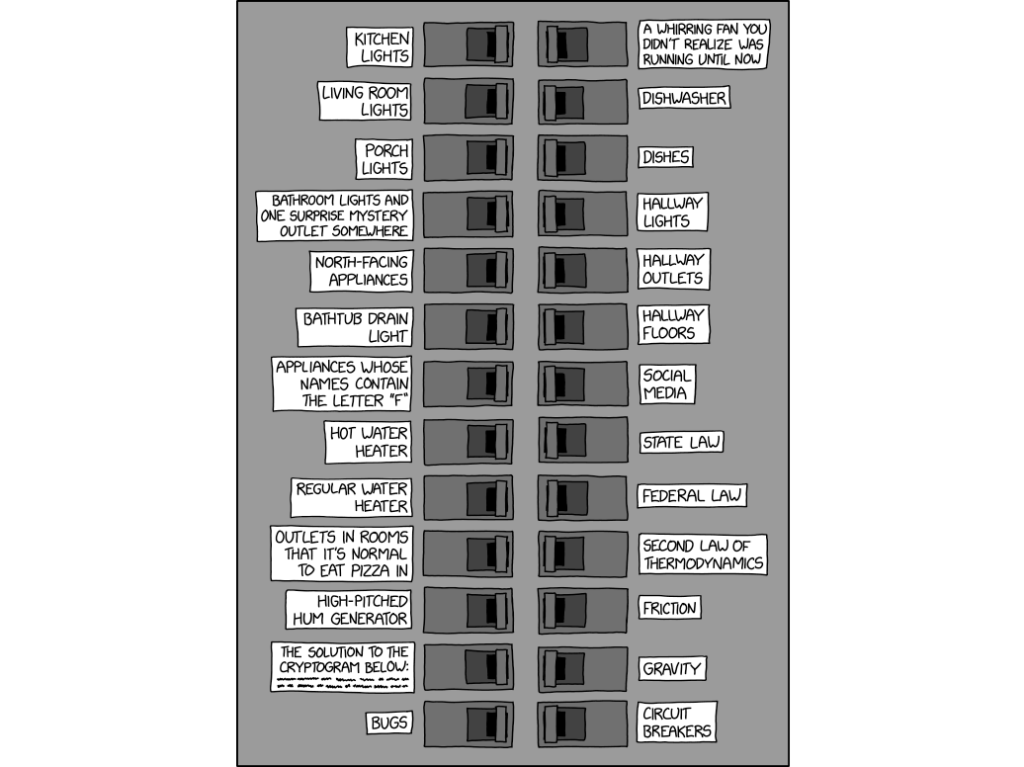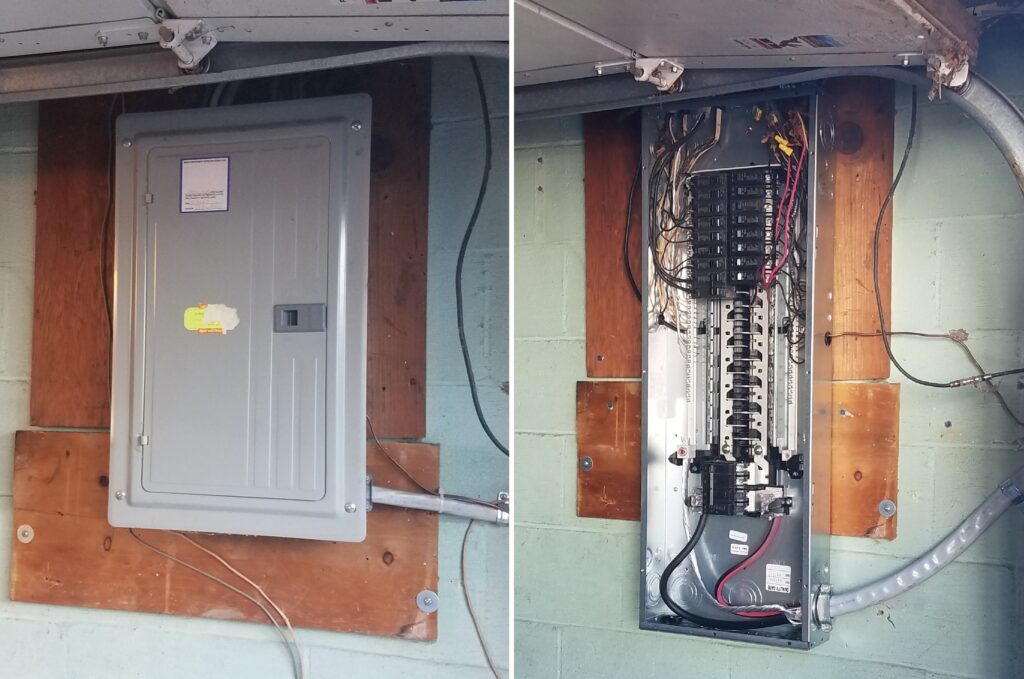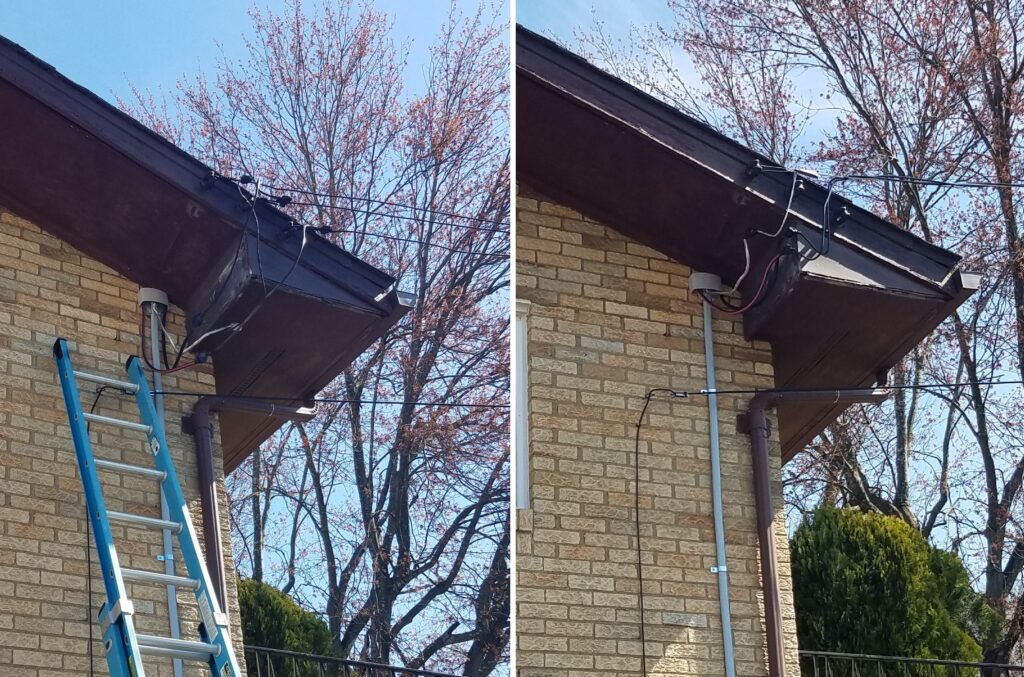My attention this year is most definitely split between efforts to limit climate change at the global level as well as at the individual level. Having just finished my blog series on Hawai’i [1] and returned from my field visit to Fiji, my attention is now back on our house. We have myriad projects that have been in a holding pattern in recent weeks and months, and one of the big ones is electrification. [2] Planning for an eventual transition to 100% electricity is not just a matter of switching out appliances, however – it also requires knowing whether your home is set up to draw as much power as it will need at any given time. And those decisions made at individual homes also have ripples out to the regional, national, and even global levels.
When my husband bought our 1950s-construction home, it still had the original General Electric oven, and I am forever grateful that he put his foot down when I moved in and wanted to switch our cooking appliances to gas. (For the record, I had made my case back before I knew about the health risks of gas use in the home [3] and before it was clear that gas was not the “clean-burning” climate solution it was purported to be. [4]) Now that we’re looking to switch everything to electric (eventually), cooking is one less thing to worry about on what is already a sizeable list.
Mystery Box
As I described before, this process began with the decision to replace our gas water heater, [5] which we knew would increase our electricity use by a significant amount. Creating heat with electricity requires resistance in the circuit – whether you’re talking about coils on your stove, the glowing element inside your toaster, or an electric blanket, that heat is a result of poor conduction through the wires. Sometimes, as in the examples above, resistance is part of the design in order to create heat; sometimes it’s not, such as with a wire that feels hot when you unplug it, which could be a sign of damage and could be creating a fire hazard (so check that out if you have an example in your home!)

Image credit: [6]
In any case, appliances used for heating something, whether it’s water, air, or food, have often relied on gas, especially in areas of the country that are rich in gas reserves, like where we live. Using an equivalent amount of electricity to do the same jobs around the house means taking a lot of electricity from the grid, and that can pose a problem if you’re trying to use a lot at once. If you’ve ever tripped a circuit breaker by (for example) running a microwave and dish washer at the same time, you probably know through experience that your home is only capable of using so much electricity at a given time. The circuit breaker is designed to protect your home by shutting off a line getting too much use before it gets too hot and causes a fire. [7]
Before we even started talking about other eventual appliances we’ll likely be buying (such as an electric furnace, clothes dryer, and possibly cars), we knew that the new hot water heater alone would require an electrical upgrade in our home. That meant a bigger breaker box and 200-amp service, up from 100 amps. In reality, we probably won’t need the capacity of the model we purchased, which can heat water for multiple appliances and showers at the same time, but we thought it would be a good idea for eventual resale value, since our home is sized for a small family, not just a couple that already doesn’t use much hot water. But since the hot water heater we chose would need three 40-amp breakers, [8] and since upgrading the electrical service would cost much more than buying the appliance itself, we decided to do all the prep work in one go.
Necessary Know-How
Finding a knowledgeable contractor is currently one of the biggest obstacles to home electrification, [9] and I know several people who have experienced frustration, miscommunication, and lack of necessary expertise on their own electrification journeys. Thankfully, our existing water heater (which looked like it might not make it past Christmas) is still holding on, which has given us the opportunity to make some decisions on our terms. And fortunately, Christian had enough time, patience, and expertise of his own to vet five options, resulting in an electrician for this project who was knowledgeable and affordable. He and I had an interesting conversation while he worked, and while he was extremely politically conservative, he also fully recognized that climate change is a serious threat and understood why so many people are starting to move away from fossil fuel use in their homes.

In addition to upgrading our breaker box to 200A, he ran three 220-volt lines to where our tankless hot water heater will soon be, ran one 220-volt line to where our (gas) dryer is, and installed two NEMA 14-50 outlets for electric car chargers on either side of the garage. (Note: we don’t even own one electric vehicle yet, but that was another “resale value” decision.) There is still additional space in the box for other future electric appliances, most notably for home heating. Our gas furnace (which Christian purchased when a tax credit for high efficiency models was available in 2009) still has a few more years on it, and we haven’t started talking about replacement options yet, though it would certainly behoove us to do that before we need to.
The new service line running to the box and through the meter connects near our roof with a line from the utility pole across the street. Our electrician’s responsibility began at that connection point and moved into the house from there. Everything related to the distribution of electricity to the customer – including the line from the pole to the house – is the responsibility of our local Electric Distribution Company (EDC), in our case, Duquesne Light Company. Once the electrician’s work was done and inspected, we had to call our EDC to request an upgraded service line to the house because that was now the limiting factor on how much power we could draw at any given time.

We were not given a timeframe on when that upgrade was supposed to happen, but there was certainly an implication that we would need to call to remind them several times over the course of several weeks. Hence my surprise when I returned home from a work meeting later that same week to see a Duquesne Light truck outside the house, all done and about to drive away without a word. The quick turnaround on the service line request was a shock in and of itself, but I was even more surprised when I learned shortly thereafter about serious supply chain shortages related to electricity grid infrastructure. And that is where we will pick up next week.
~
Do you have any stories to share about electricity upgrades at your home or any questions you have about next steps on your own journey? Please share them below – I’m still learning too.
Thanks for reading!
[1] https://radicalmoderate.online/climate-lab-hawaii-in-the-classroom/
[2] https://radicalmoderate.online/beneficial-electrification/
[3] https://www.psehealthyenergy.org/case-study-on-gas-stove-research
[5] https://radicalmoderate.online/tankless-water-heater/
[7] https://www.homeserve.com/en-us/blog/home-improvement/hair-dryer-tripping-circuit-breaker/
[8] https://www.tanklesswaterheaterdepot.com/rheem-rtex-27-electric-tankless-hot-water-heater
0 Comments